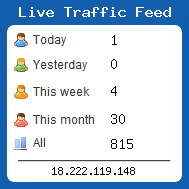AUTHOR GUIDELINES
Authors must strictly follow the submission guidelines of the journal. To submissions that do not adhere to the guidelines provided, they will be REJECTED. Please submit your article through the online submission of this journal.
Article Structure in General:
All articles must be written in English, should have an abstract between 200 to 250 words in length, followed by three to five keywords related to your article. Submissions should be between 4000-8000 (including abstract, table(s), figure(s) and references) in A4 size paper with margins as the following: top 1.18”, bottom 0.98”, right 0.98” and left 1.58”.
Title: the title should summarize the main idea or ideas of your paper; the title is within 14 words maximum.
Author Detail: include name of authors and their affiliation. Email is required for corresponding author only. SiELE requires that authorship be based on the following four criteria:
- Substantial ontributions to the idea or method of the research; or the collection, analysis, or interpretation of data for the research; AND
- Drafting the paper or revising it for important intellectual content; AND
- Final approval of the version to be submitted and published; AND
- Agreement to be accountable for all aspects of the article (and research) in ensuring that questions related to the accuracy or integrity of any part of the work are appropriately investigated and resolved.
Contributors who do not meet all 4 criteria for authorship above should be listed in acknowledgement, not as authors. Therefore, contributors doing acquisition of funding; general supervision of a research group or general administrative support; and writing assistance, technical editing, language editing, and proofreading do not qualify for authorship. To prevent misconduct in authorship, KHELIE only allows a maximum of seven authors for one article starting in 2020. Each author’s contribution to the article must be stated in the cover letter to be uploaded as a supplementary file into the OJS during article submission. Download the cover letter template HERE.
Abstract: concisely describe the content and scope of your paper and identify the objective(s), its methodology and its findings, conclusions, or intended results.
Keywords: The words should capture the essence of your paper. Include the most relevant keywords that will help other authors find your paper. These words must be presented in alphabetical order and separated by commas.
Introduction: state your work’s objectives and provide an adequate background, avoiding a detailed literature survey or a summary of the results. Explicitly state the literature gap, which signifies your research’s significance.
When paraphrasing a source that is not your own, be sure to represent the author’s information or opinions accurately and in your own words. Even when paraphrasing an author’s work, you still must provide a citation to that work. When directly quoting an author’s work, provide citation marks at the beginning till the end of the citation. The page number must be noted beside the author’s name and year of publication.
Literature Review: include the current knowledge, substantive findings, and theoretical and methodological contributions to your topic. A literature review surveys books, scholarly articles, and any other sources relevant to a particular issue, area of research, or theory and, by so doing, provides a description, summary, and critical evaluation of these works in relation to the research problem being investigated.
Method: provide sufficient detail to allow your work to be reproduced. This includes participants, location (if necessary), instrument(s), the technique of data collection, and the technique of data analysis. A reference should indicate methods already published; only relevant modifications should be described.
Results: present the results of your work. Use graphs and tables if appropriate, and summarize your main findings in the text. Do NOT discuss the results or speculate as to why something happened; that goes in the Discussion.
Discussion: highlight the most significant results, but do not repeat what has been written in the Results section. The purpose of the discussion is to interpret and describe the significance of your findings in light of what was already known about the research problem being investigated and to explain any new understanding or insights that emerged as a result of your study of the problem. A combined Results and Discussion section is often appropriate.
Conclusion: provide the final words on the value of your analysis, research, or article. Limitations of your study should be addressed. Recommendations for future research related to your topic should also be mentioned.
Acknowledgments (optional): give credit to funding bodies and departments that have been of help during the project, for instance, by supporting it financially.
References: follow the APA 7 style.
All names/references mentioned in the text/article should be listed in the References section. Names not mentioned in the text/article should be removed from the References section.
Appendices (optional): if there is more than one appendix, they should be identified as Appendix A, Appendix B, etc. Formulae and equations in appendices should be given separate numbering: Eq. (A.1), Eq. (A.2), etc.; in a subsequent appendix, Eq. (B.1), and so on. Similarly, for tables and figures: Table A.1; Fig. A.1, etc.







